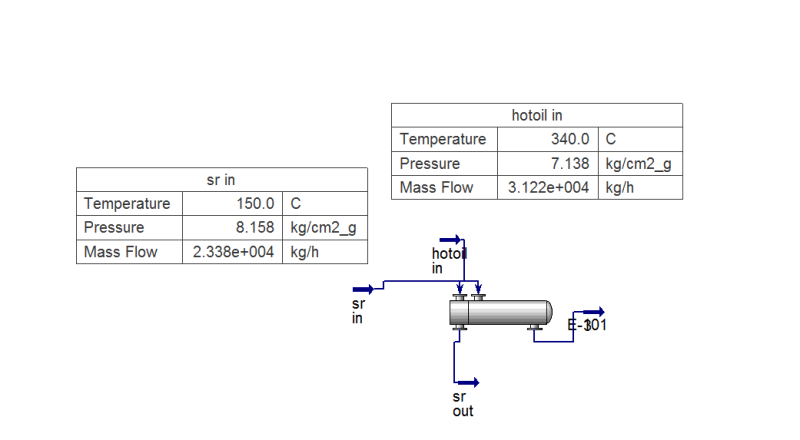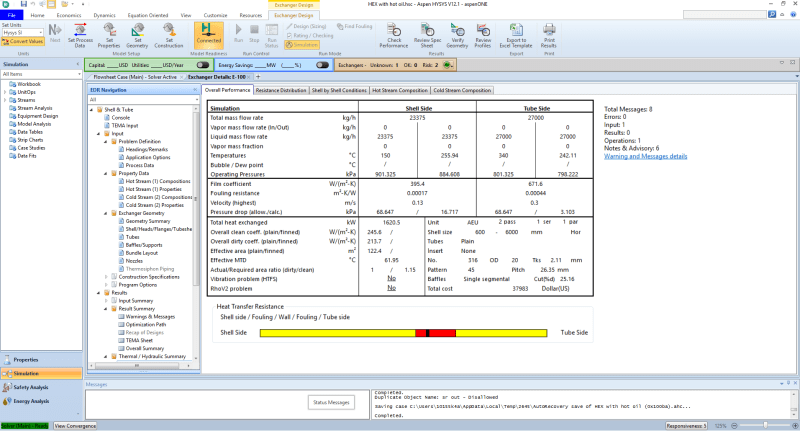Hello...
I am running EDR for the first time...I need to heat a heavy stream of crude from 150 to 240 C....Different heating mediums are being considered and one among them is hot oil...I know the hot oil inlet and outlet temperatures...I am estimating the hot oil flowrate required using a simple heat exchanger...I am attaching a picture below..
when I do EDR with that the previously estimated hot oil flowrate...the heavy stream is getting heated to around 256 instead of 240 and the hot oil outlet stream is lesser than the sepcified outlet temperature of 270 C...
What can i do in this case ? Should I reduce the hot oil flowrate estimated and use lesser quantity or reduce the number of tubes ??
I am attaching the screenshots below..
Thanks in advance !!


I am running EDR for the first time...I need to heat a heavy stream of crude from 150 to 240 C....Different heating mediums are being considered and one among them is hot oil...I know the hot oil inlet and outlet temperatures...I am estimating the hot oil flowrate required using a simple heat exchanger...I am attaching a picture below..
when I do EDR with that the previously estimated hot oil flowrate...the heavy stream is getting heated to around 256 instead of 240 and the hot oil outlet stream is lesser than the sepcified outlet temperature of 270 C...
What can i do in this case ? Should I reduce the hot oil flowrate estimated and use lesser quantity or reduce the number of tubes ??
I am attaching the screenshots below..
Thanks in advance !!


